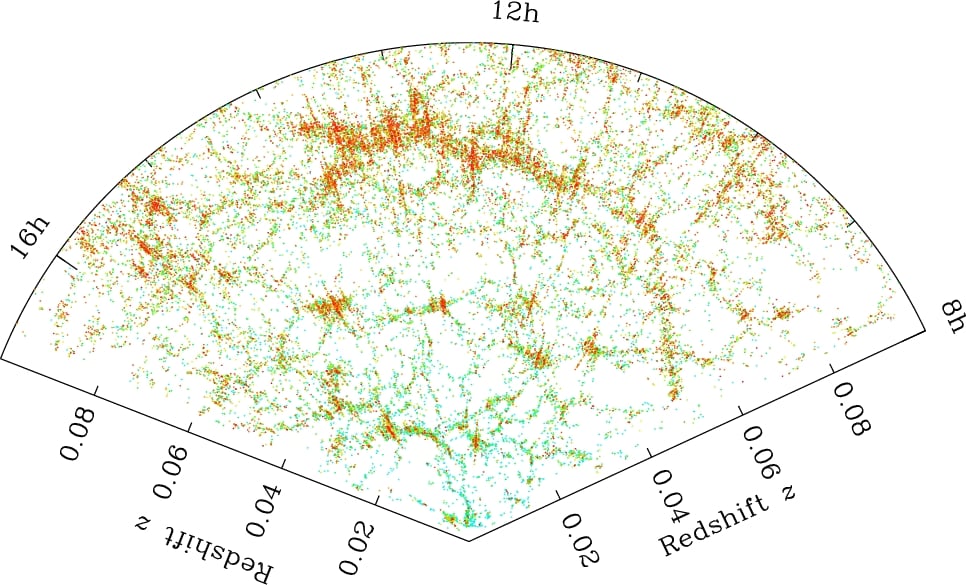[/caption]
Cosmic voids
really are
devoid of matter. Astronomers have found that even the pervasive 'dark matter' which accounts for about 80% of the mass of the universe is not present in these voids, which are areas of vast emptiness in space that can be tens of millions of light-years across. "Astronomers have wondered for a quarter-century whether these voids were 'too big' or 'too empty' to be explained by gravity alone," said University of Chicago researcher Jeremy Tinker, who led the new study using data from the Sloan Digital Sky Survey II (SDSS-II). "Our analysis shows that the voids in these surveys are exactly as big and as empty as predicted by the 'standard' theory of the universe."
The largest 3-dimensional maps of the universe show that galaxies lie in filamentary superclusters interlaced by cosmic voids that contain few or no bright galaxies. Researchers using SDSS-II and the Two-Degree Field Galaxy Redshift Survey (2dFGRS) have concluded that these voids are also missing the "halos" of invisible dark matter that bright galaxies reside in.
A central element of the standard cosmological theory is cold dark matter, which exerts gravity but does not emit light. Dark matter is smoothly distributed in the early universe, but over time gravity pulls it into filaments and clumps and empties out the spaces between them. Galaxies form when hydrogen and helium gas falls into collapsed dark matter clumps, referred to as "halos," where it can form luminous stars.
But astronomers were not sure if the areas that are devoid of galaxies were also devoid of dark matter, or if the dark matter was there, but for some reason stars just didn't form in these voids.
The research team used bright galaxies to trace the structure of dark matter and compared it with computer simulations to predict the number and sizes of voids.
Princeton University graduate student Charlie Conroy measured the sizes of voids in the SDSS-II maps. "When we used galaxies brighter than the Milky Way to trace structure, the biggest empty voids we found were about 75 million light years across," said Conroy. "And the predictions from the simulations were bang-on."
The sizes of voids are ultimately set, Conroy explained, by the small variations in the primordial distribution of dark matter, and by the amount of time that gravity has had to grow these small variationsinto large structures.
The agreement between the simulations and the measurements holds for both red (old) and blue (new) galaxies, said Tinker. "Halos of a given mass seem to form similar galaxies, both in numbers of stars and in the ages of those stars, regardless of where the halos live."
Tinker presented his findings today at an international symposium in Chicago, titled "The Sloan Digital Sky Survey: Asteroids to Cosmology." A paper detailing the analysis will appear in the September 1 edition of The Astrophysical Journal, with the title "Void Statistics in Large Galaxy Redshift Surveys: Does Halo Occupation of Field Galaxies Depend on Environment?"
News Source:
SDSS and The Ohio State University
 Universe Today
Universe Today
